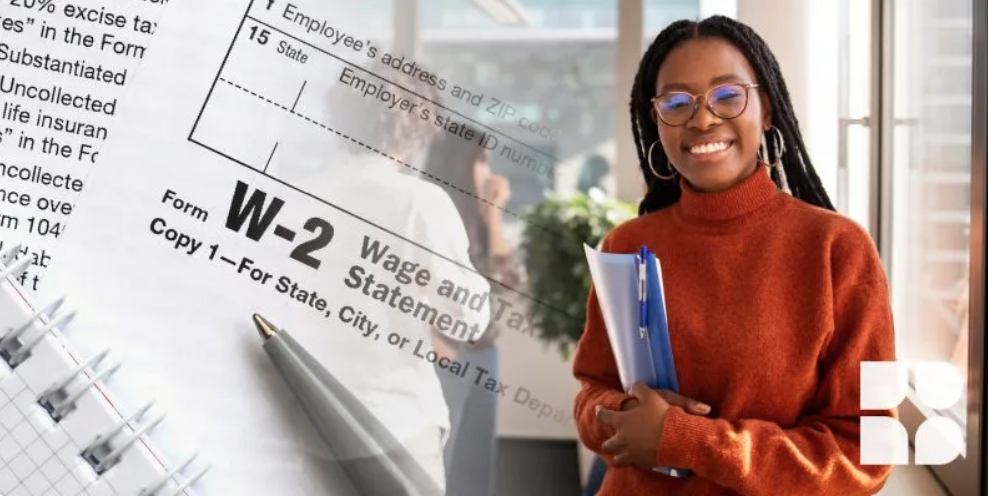NEW TO THE WORKFORCE? HERE’S YOUR TAX GUIDE.

We are celebrating Financial Literacy Month all through April. And while volumes have been written on financial literacy topics like budgeting and saving, taxes have not gotten the same attention.
Personal taxes are a big part of being financially literate. Unfortunately, some studies have shown that 1 in 4 U.S. taxpayers don’t understand how taxes are determined, and 85% don’t know where their tax refunds come from. Let’s put a dent in those numbers with today’s blog post, shall we?
How your taxes are determined
In a nutshell, taxes are determined by how much money you take in during a calendar year. That is your income. Your pay, interest earned on investments, and gains you make when you sell something are all potentially taxable. Potentially is the keyword. Here’s why.
Not all income is taxable
The IRS allows you to deduct and exempt certain portions of your income. That part of your income is not taxable, generally speaking. Those deductions are popular because they reduce how much of your income is taxed. The part of your income left over after all the deductions and exemptions catches Uncle Sam’s attention.
So, if you made $60,000 of income in 2022 but took $15,000 in deductions, your taxable income would be $45,000.
That begs the next question. How does the government determine how much to take?
The IRS puts you in a tax bracket
Tax brackets are a big deal. But they aren’t what some think. For example, if you fall in the 24% tax bracket, that doesn’t mean you pay that percentage on all your taxable income.
You work up the chain. Here’s what we mean.
The tax bracket for single payers in 2022 was as follows:
- 37% for incomes higher than $539,900.
- 35% for incomes over $215,950.
- 32% for incomes over $170,050.
- 24% for incomes over $89,075.
- 22% for incomes over $41,775.
- 12% for incomes over $10,275.
- 10% for incomes $10,275 or less.
Let’s say you made $40,000 in taxable income (don’t forget those deductions) in 2022. That puts you in the 12% tax bracket. But you don’t pay 12% on it all. Initially, you pay 10% on the first $10,275. That’s $1,027.50. You pay 12% on anything over $10,275. So, $40,000 minus $10,275 is $29,725. 12% of $29,725 is $3,567. So, your total tax on $40,000 would be $1027.50 plus $3,567, which is $4,594.50.
If you owe all that money, how do you get a refund?
Demystifying tax refunds
By law, you had to pay those taxes in advance, either through employer withholding or estimated taxes if you are self-employed. Those are notoriously difficult to get exactly right. Most people wind up overpaying, especially after certain deductions and exemptions are put into the equation. So, that’s how you wind up with a refund. You basically let Uncle Sam borrow your money interest-free for a year.
The Bottom Line
When it comes to financial literacy topics, personal taxes seem to take a back burner. But it’s important to know what deductions you can take and how much of your income is taxed. It will help you make smarter decisions that might help you keep more of your income.